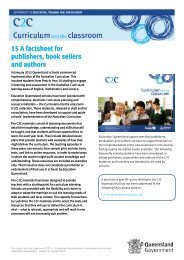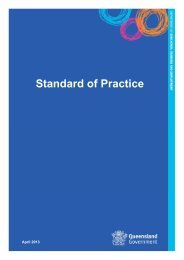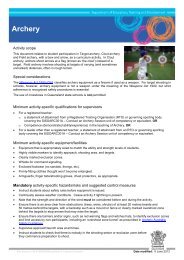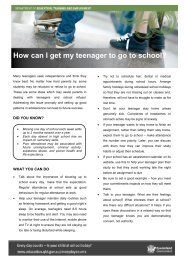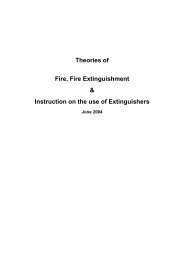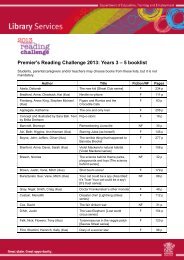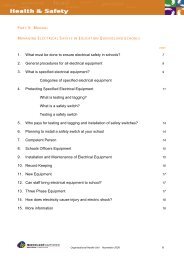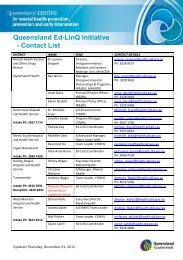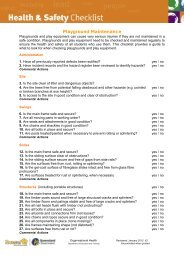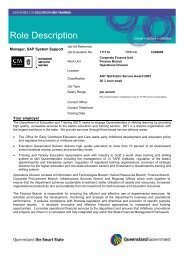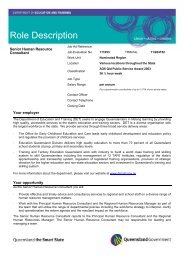Anaphylaxis guidelines for Queensland State Schools - Education ...
Anaphylaxis guidelines for Queensland State Schools - Education ...
Anaphylaxis guidelines for Queensland State Schools - Education ...
You also want an ePaper? Increase the reach of your titles
YUMPU automatically turns print PDFs into web optimized ePapers that Google loves.
12. Roles and responsibilities of the parent<br />
A parent of a child at risk of anaphylaxis plays a vital role in assisting the school to support the student.<br />
Communicate with your child:<br />
• Educate your child about their allergies and how to minimise risk of exposure (such as not sharing food<br />
if allergic to food, or precautions outdoors if allergic to insects).<br />
Communicate with the school:<br />
• Notify the school of the student’s allergies and risk of anaphylaxis and<br />
provide appropriate medical in<strong>for</strong>mation.<br />
• Provide written notification <strong>for</strong> the school to administer, or assist a student<br />
with the administration of, a prescribed medication (<strong>for</strong> example, EpiPen®<br />
or Anapen® and/or antihistamines).<br />
• Ensure that the school is notified of changes to the student’s medical<br />
condition or medication order.<br />
• Consider providing permission <strong>for</strong> the school to share the student’s<br />
medical in<strong>for</strong>mation with relevant staff and volunteers, so that necessary<br />
risk management processes can be followed.<br />
• Determine an agreed method the child will use to alert the school staff that<br />
they are experiencing symptoms of anaphylaxis.<br />
Provide and check medication and equipment:<br />
• Ensure the student has an anaphylaxis emergency kit which includes their<br />
Action Plan completed by the student’s doctor, the student’s personal<br />
adrenaline auto-injector, and pencil and paper.<br />
• Ensure that all medication, including the student’s adrenaline auto-injector, is labelled clearly with the<br />
student’s name and dosage in<strong>for</strong>mation and stored in a suitable bag/container.<br />
• Monitor the expiry date of the student’s adrenaline auto-injector and replace if used and be<strong>for</strong>e it<br />
reaches its expiry date.<br />
• Replace the auto-injector promptly if used or expired.<br />
Example of student’s<br />
anaphylaxis emergency kit<br />
26 <strong>Anaphylaxis</strong> <strong>guidelines</strong> <strong>for</strong> <strong>Queensland</strong> state schools



